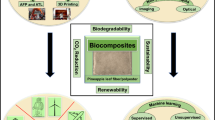Abstract
Interfaces in heterogeneous structures are typically engineered for optimal strength through the control of surface roughness and the choice of adhesives. Advances in manufacturing technologies are now making it possible to also tailor the geometries of interfaces from the nanoscale to the macroscale to create geometrically complex interfaces that exhibit enhanced performance characteristics. However, the impact of geometric complexity on the mechanical behavior of interfaces has not yet been ascertained. In this investigation, the first step is taken towards understanding the effects of geometric complexity on interfacial strength. A new multi-stage, multi-piece molding process is used to create heterogeneous polymer structures with geometrically complex interfaces consisting of rectangular and circular interlocking features. The structural integrity of these heterogeneous structures is characterized through interfacial tension testing. The full-field deformation measurement technique known as digital image correlation is also used during the testing to visualize the deformation fields around the geometrically complex features. Through this characterization, it is determined that the complex geometries increase the interfacial strength by approximately 20–25%, while reducing the statistical variation by 50%. These effects are attributed to a transition in the failure mechanism from interfacial fracture to homogeneous ligament failure. Results also indicate that geometrically complexity can be used on completely debonded interfaces to increase the strength to at least 25–35% of the bonded interface. Based on these results, some simple design rules have been proposed that enable geometrically complex interfaces to be engineered with enhanced strengths approaching the weaker of the two base materials. These design rules can also be used in the engineering of interfaces to facilitate the development of heterogeneous structures using new design paradigms, such as design for recyclability and the design of products based on bio-inspired concepts.
Similar content being viewed by others
References
Gandhi, M.V. andThompson, B.S., Smart Materials and Structures, Chapman & Hall, London (1992).
Hansen, L.T., Kuhle, A., Sorensen, A.H., Bohr, J. andLindelof, P.E., “A Technique for Positioning Nanoparticles Using an Atomic Force Microscope,”Nanotechnology,9,337–342 (1998).
Rajagopalan, S., Goldman, R., Shin, K.H., Kumar, V., Cutkosky, M.R., andDutta, D., “Representation for the Design, Processing and Freeform Fabrication of Heterogeneous Objects,”Materials and Design,22,185–197 (2001).
Bailey, S.A., Cham, J.G., Cutkosky, M.R., and Full, R.J., “Biomimetic Robotic Mechanisms via Shape Deposition Manufacturing,” in Proceedings of the 9th International Symposium of Robotics Research, Snowbird, UT, October (1999).
Merz, R., Prinz, F.B., Ramaswami, K., Terk, M., and Weiss, L., “Shape Deposition Manufacturing,” in Proceedings of the Solid Freeform Fabrication Symposium, Austin, TX. (1994).
Beaman, J., Bourell, D., Jackson, B., Jepson, L., McAdams, D., Perez, J., and Wood, K. “Multi-Material Selective Laser Sintering: Empirical Studies and Hardware Development,” in Proceedings of the NSF Design and Manufacturing Grantees Conference, Vancouver, Canada, January (2000).
Jepson, L., Perez, J., Beaman, J., Bourell, D., and Wood, K., “Development of Multi-Material Selective Laser Sintering Process,” in Proceedings NSF Design and Manufacturing Grantees Conference, Long Beach, CA, January (1999).
Park, S.M., Crawford, R.H., and Beaman, J.J. “Functionally Gradient Material Design and Modeling Using Hypertexture for Solid Freeform Fabrication,” in Proceedings of the Solid Freeform Fabrication Symposium, Austin, TX, August (1999).
Jackson, T.R., Sachs, E.M., and Cima, M.J., “Modeling and Designing Components with Locally Controlled Composition,” in Proceedings of the Solid Freeform Fabrication Symposium, University of Texas at Austin, Austin, TX, August (1998).
Wu, H., Sachs, E.M., Patrikalakis, N.M., Brancazio, D., Serdy, J., Jackson, T.R., Cho, W., Liu, H., Cima, M., and Resnick, R., “Distributed Design and Fabrication of Parts with Local Composition Control,” in Proceedings of the NSF Design and Manufacturing Grantees Conference, Vancouver, Canada, January (2000).
Kumar, M., “Automated Design of Multi-Stage Molds For Manufacturing Multi-Material Objects,”MS Thesis, University of Maryland, College Park (2001).
Pigott, M.R., “Failure Processes in Fiber-Polymer Interphase,”Composite Science and Technology,42,56–76, (1991).
Kalpakjian, S., “Manufacturing Processes for Engineering Materials, 3rd edition, Addison Wesley Longman, Menlo Park, CA (1997).
Wake, W.C., “Theories of Adhesion and Uses of Adhesives: A Review,”Polymer,19,291–308 (1978).
de Avillez, R.R., Lopes, M.F.S. andSilva, A.L.M., “Stereological Properties of the Intermetallic Formed at the Nickel-Liquid Tin Interface,”Materials Science and Engineering,A205,209–213 (1996).
Briscoe, B.J. andPanesar, S.S., “The Effect of Surface Topography on the Adhesion of Poly(urethane)-Metal Contacts,”Journal of Physics D: Applied Physics,25,A20-A27 (1992).
Bruck, H.A., McNeill, S.R., Sutton, M.A. andPeters, W.H., III, “Digital Image Correlation Using Newton-Raphson Method of Partial Differential Correction,”EXPERIMENTAL MECHANICS,29,261–267 (1989).
Luo, P.F., Chao, Y.J., Sutton, M.A. andPeters, W.H., “Accurate Measurement of Three-Dimensional Deformations in Deformable and Rigid Bodies Using Computer Vision,”EXPERIMENTAL MECHANICS,33,123–132 (1993).
Helm, J.D., McNeill, S.R. andSutton, M.A., “Improved Three-Dimensional Image Correlation for Surface Displacement Measurement,”Optical Engineering,35,1911–1920 (1996).
Sutton, M.A., Turner, J.L., Bruck, H.A. andChae, T.L., “Full-Field Representation of Discretely Sampled Surface Deformation for Displacement and Strain Analysis,”EXPERIMENTAL MECHANICS,31,168–177 (1991).
Kobayashi, A., ed., Handbook of Experimental Mechanics, Society for Experimental Mechanics, Bethel, CT (1993).
Moore, C.L. andBruck, H.A., “A Fundamental Investigation into Large Strain Recovery of One-way Shape Memory Alloy Wires Embedded in Flexible Polyurethanes,”Smart Materials and Structures,11,130–139 (2002).
Munz, D. andYang, Y.Y., “Stress Singularities at the Interface in Bonded Dissimilar Materials Under Mechanical and Thermal Loading,”Journal of Applied Mechanics,59,857–861 (1992).
Bruck, H.A. andGershon, A.L., “Three-Dimensional Effects Near the Interface in a Functionally Graded Ni−Al 2O3 Plate Specimen,”International Journal of Solids and Structures,39,547–557 (2002).
Author information
Authors and Affiliations
Rights and permissions
About this article
Cite this article
Bruck, H.A., Fowler, G., Gupta, S.K. et al. Using geometric complexity to enhance the interfacial strength of heterogeneous structures fabricated in a multi-stage, multi-piece molding process. Experimental Mechanics 44, 261–271 (2004). https://doi.org/10.1007/BF02427892
Received:
Revised:
Issue Date:
DOI: https://doi.org/10.1007/BF02427892




